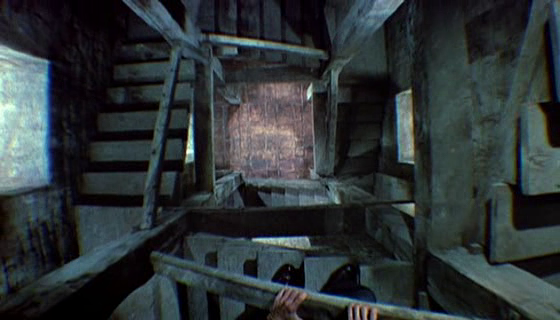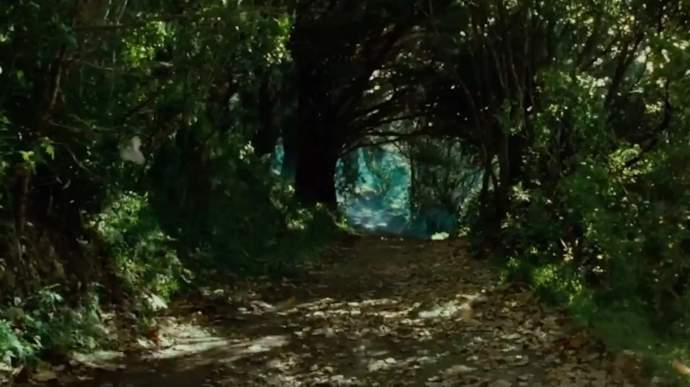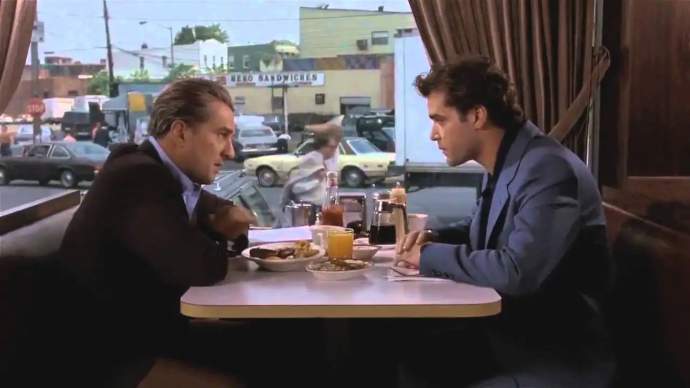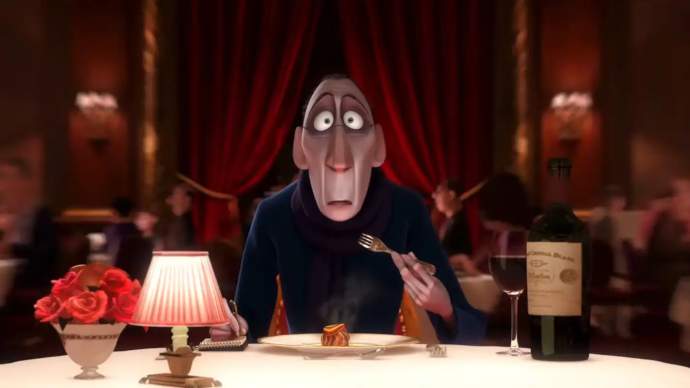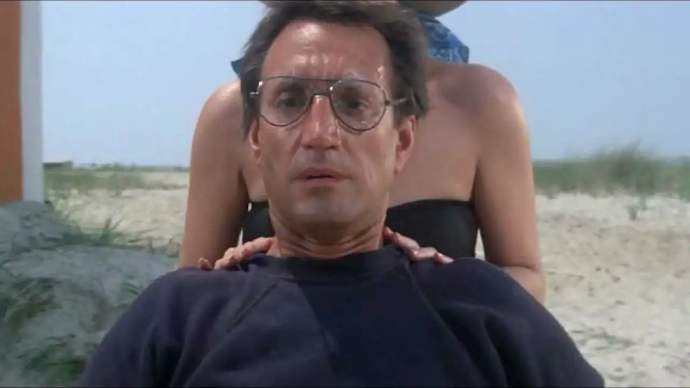In layman’s terms, the contra zoom is when the camera lens zooms in on the subject while the camera itself is pulled backwards. The resulting effect is pretty dizzying, making it look like the subject stays in place while the background morphs around them. The contra zoom is most frequently used to emphasize key moments of realization, to depict mental confusion, or to signal an evil presence. Here are several examples of movies that have iconic sequences that incorporate the contra zoom technique.
5. Vertigo (1958)
Here’s the movie that started it all: Vertigo. The disorienting effect of the dolly zoom makes it perfect for relaying that spinning feeling of vertigo, which—as the title suggests—plays a big role in Hitchcock’s classic. Scotty (played by Jimmy Stewart) is afraid of heights, causing his head to spin every time he climbs too high. However, it’s this fear he must overcome if he’s to save the love of his life, who stands at the top of the looming bell tower. As Scotty looks down, the twirling stairs seem to twist and pulsate—both in his mind and through the camera lens. This innovative use of the contra zoom really places us in the shoes of Scotty, accentuated by the kaleidoscopic structure of the tower.
4. The Lord of the Rings: The Fellowship of the Ring (2001)
The contra zoom is frequently used in horror movies to connote the paranormal or the presence of evil, which is something that fantasy film Fellowship of the Ring taps into. “Get off the road!” shouts Frodo (played by Elijah Wood) as leaves begin to whip around in the air. The four young hobbits had been warned to keep off the road to avoid Ringwraiths—evil hooded figures on horseback that are out to kill whoever bears the One Ring. Director Peter Jackson captures this threat visually using the contra zoom, causing the road to represent a kind of dangerous portal that’s ready to suck the hobbits into the One Ring’s spell.
3. Goodfellas (1990)
Here’s one of the longest uses of the contra zoom technique in film, and of course it was orchestrated by the great Martin Scorsese. You might not notice this one at first since the slow pace of the zoom effect is extremely subtle. However, if you speed the clip up, you see the obvious use of the dolly zoom. The resulting effect is pretty great! Scorsese tracks down the hallway of the diner as gangster Henry Hill (played by Ray Liotta) enters. He sits down with fellow mobster Jimmy Conway (played by Robert De Niro) at a booth by the window so that they can see if any enemies approach. As they discuss a hit assignment, suspicion begins to rise, which Scorsese signals with the contra zoom. We are at once brought closer and further away from the scene, with Scorsese building tension as their trust in each other grows further apart.
2. Ratatouille (2007)
It’s not just live-action movies that use the Vertigo shot—it’s also used quite a bit in animation! You can spot it in a few Pixar movies (for example, when Elastigirl visits Edna “E” Mode in The Incredibles), but the most iconic example is in Brad Bird’s Ratatouille. When the snobby and perpetually dissatisfied food critic Anton Ego tastes Remy’s delicious meal, he’s transported back to his childhood. Bird shows this through the camera movement, literally transporting us through the critic’s memories via contra zoom. Anton’s eyes widen as he recalls his boyhood days eating homemade ratatouille with his mother. It’s this lightbulb moment that completely changes the critic’s perspective, resulting in a good review and Remy opening his own bistro.
1. Jaws (1975)
Undoubtedly, this sequence in Jaws is the most famous use of the contra zoom, which comes into play during the scene when the police chief realizes the waters are shark-infested. The famous theme music builds up to a steady crescendo as Steven Spielberg dolly-zooms on protagonist Martin Brody (played by Roy Scheider), who notices the bloody scene. His lazy beach day is disrupted by blood in the ocean, and this moment triggers the entire plot. Brody teams up with a shark fisherman and oceanographer to hunt down the Great White and prevent it from killing again. Jaws was one of the first summer blockbuster movies ever made, which is why this pivotal moment of realization is so iconic. Read next: How ILM’s StageCraft technology is going to revolutionize filmmaking

